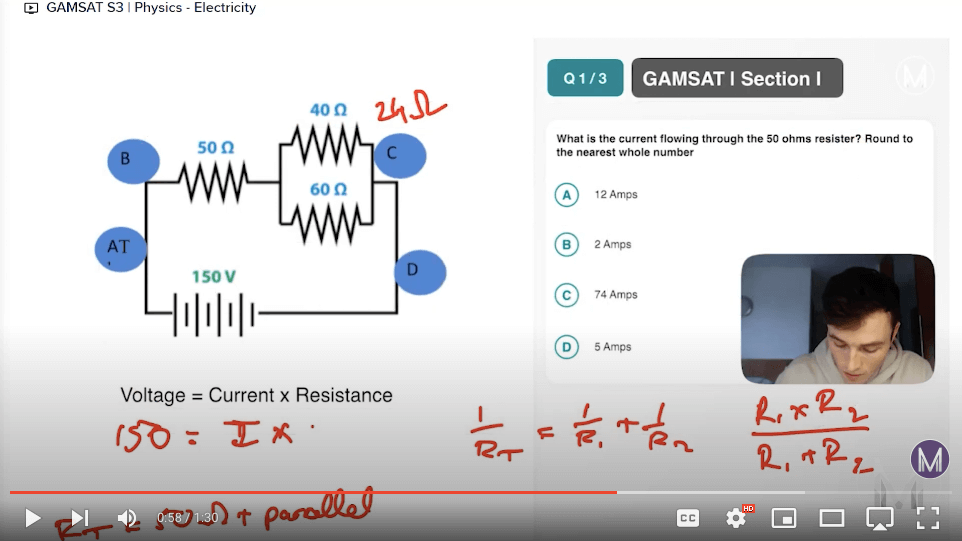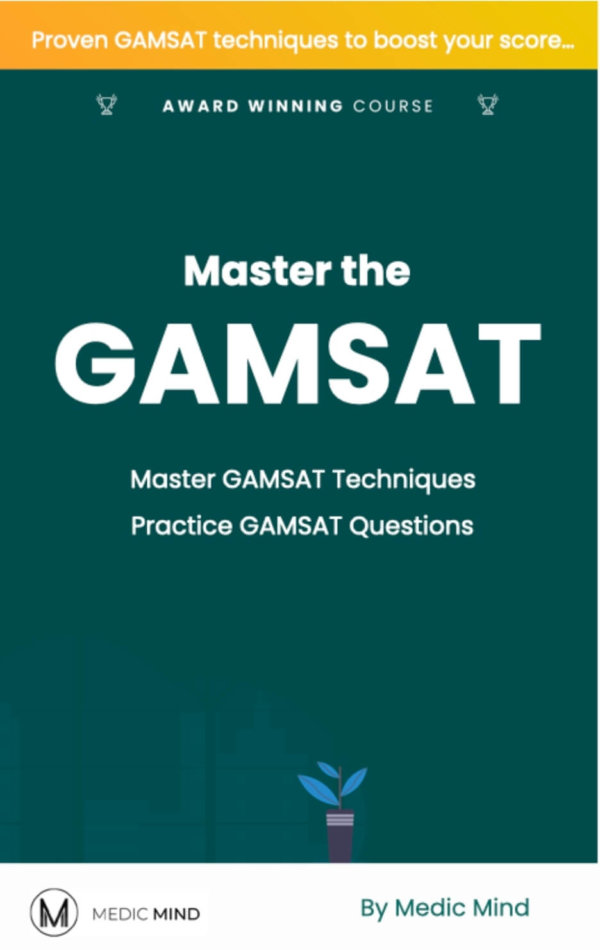Loading...

Preparation for Every GAMSAT Section!
Good preparation for the GAMSAT is key! Make sure to read this article to learn how to prepare in the best possible way.
The GAMSAT has 3 sections which test very different sets of skills. You need to prepare for each section separately, using different strategies that are tailored to the different types of questions, to ensure you are fully prepared.

Here is a summary of the 3 sections:
| Section | No. of Questions | Reading time | Writing time | Total test time |
| Section 1: Reasoning in Humanities | 62 | 8 minutes | 92 minutes | 100 minutes |
| Section 2: Written Communication | 2 | 5 minutes | 60 minutes | 65 minutes |
| Section 3: Reasoning in Biological and Physical Sciences | 75 | 8 minutes | 142 minutes | 150 minutes |
Section 1
GAMSAT Section 1 is ‘Reasoning in Humanities’. There are 62 multiple choice questions to complete within 100 minutes. The types of source material that can be used for questions in Section 1 include poetry, fiction, non-fiction, cartoons, charts and quotes. Good preparation for this section involves practicing questions, revising poetic and literary techniques, and increasing your reading speed through extra reading. Check out our 10 Top Tips for Section 1.
Section 2
Section 2 of the GAMSAT is known as ‘Written Communication’. You are required to write two written pieces in 60 minutes. This means you have approximately 30 minutes to plan and write each essay. The best way to prepare for Section 2 is by looking at example essay topics and creating mind maps to help plan and structure your answers. You should also practice writing essays to get used to writing in the time limit. Reading different forms of media can also help improve your ideas and creativity. You could even try making note of your essay ideas in an idea bank! Take a look at our 10 Top Tips for Section 2.
Section 3
Section 3 of the GAMSAT is the science-based part of the exam and is known as “Reasoning in Biological and Physical Sciences”. It is the final and longest part of the exam – you have 150 minutes to answer 75 multiple choice questions. This section is different to the previous sections as it relies on your prior knowledge. Therefore your preparation strategy for Section 3 will look very different to the way you prepare for Sections 1 and 2. Section 3 is weighted doubly when calculating your overall GAMSAT score so it definitely deserves a lot of preparation time!
Section 3 is made up of 40% chemistry questions, 40% biology questions, and 20% physics questions. Although physics takes up the smallest part of the section, it is still very important to prepare for. Whilst it is beneficial to be familiar with the different science topics, do not be afraid if you have no previous science knowledge. As mentioned, the GAMSAT is an exam that aims to test your ability to interpret information and therefore most of the information is provided within the stem. So whilst prior knowledge will help your answering speed, practising questions and learning to extract and interpret information is highly important. Make sure to spend time revising the topics and more importantly, practice GAMSAT style questions! Check out our 10 Top Tips for Section 3.
For last-minute GAMSAT preparation, why not check out our GAMSAT crash course.
Frequently Asked Question
→What is the GAMSAT?
The Graduate Medical School Admissions Test (GAMSAT) is a standardized test used to assess the aptitude and suitability of candidates applying to medical school in Australia, the UK, and Ireland.
→What are the qualitative sections of the GAMSAT?
The qualitative sections of the GAMSAT include Section 1: Reasoning in Humanities and Social Sciences, and Section 2: Written Communication.
→How can I prepare for the qualitative sections of the GAMSAT?
To prepare for the qualitative sections of the GAMSAT, it is important to develop strong critical thinking, analytical, and communication skills. This can be achieved through extensive reading and analysis of a variety of texts, including fiction, non-fiction, and academic literature, as well as practicing written communication skills through timed essay writing and feedback.
→What are some tips for improving critical thinking skills for the GAMSAT?
Tips for improving critical thinking skills for the GAMSAT include reading widely and critically, analyzing arguments and evidence, identifying assumptions and biases, and practicing logical reasoning and problem-solving skills through practice questions and mock exams.
→What resources are available for qualitative preparation for the GAMSAT?
Resources for qualitative preparation for the GAMSAT include study guides, practice questions and exams, online courses and tutoring, and academic literature in humanities and social sciences.
→How can I manage time effectively during the qualitative sections of the GAMSAT?
Time management during the qualitative sections of the GAMSAT can be improved through practice and developing effective strategies for analyzing texts and writing essays quickly and efficiently. It is important to prioritize time according to the marks allocated for each question and section, and to practice timed essay writing regularly.
→How important is practice for the qualitative sections of the GAMSAT?
Practice is crucial for the qualitative sections of the GAMSAT. Regular practice of critical thinking, analytical, and written communication skills through practice questions, mock exams, and feedback can help improve performance on the exam.
Related
Related
Personalised 1-1 private lessons, tailored to your GAMSAT needs
With over 1000 GAMSAT questions, worked examples and mock run-throughs - your complete GAMSAT course!
Prepare for the GAMSAT with a full day of expert GAMSAT tuition, learning the tips and tricks to boost your score to the maximum.





Was this article helpful?
Still got a question? Leave a comment
Leave a comment